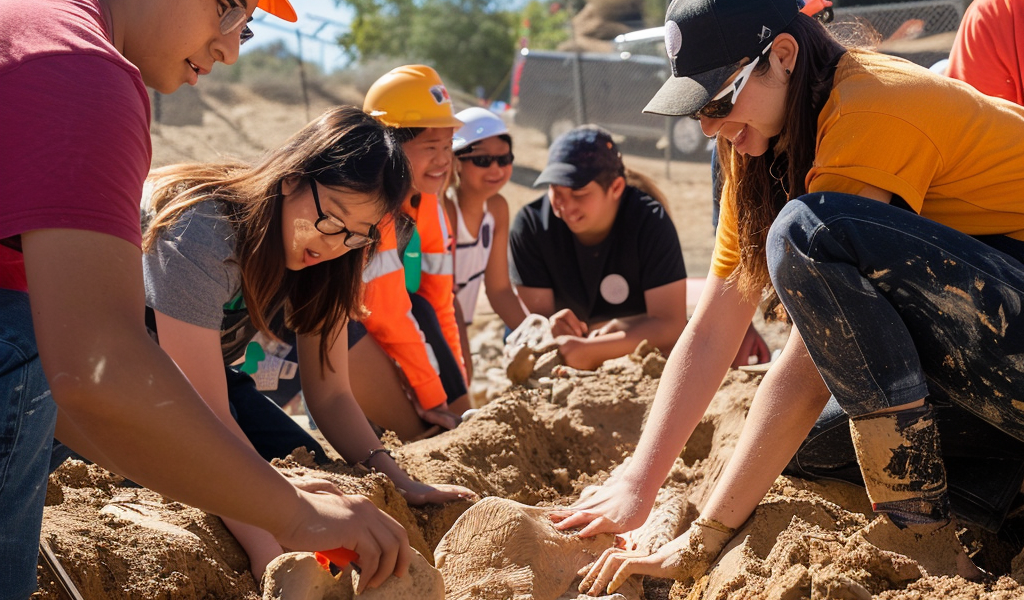In a remarkable turn of events, a routine renovation project at San Pedro High School in Los Angeles has unveiled a stunning array of prehistoric fossils, providing a unique glimpse into the ancient past. The discovery, which began during construction work in 2022, has revealed a wealth of fossils dating back millions of years, including the iconic megalodon shark.
The excavation efforts have unearthed over 200 species of fossils, ranging from a sabre-toothed salmon to juvenile megalodon teeth, astonishing both students and experts alike. Taya Olson, a student at the school, expressed her amazement at the find, stating, “I thought this stuff was something that never happens, especially around here. It only happens in textbooks.” This sentiment reflects the excitement and curiosity surrounding the discovery.
Wayne Bischoff, the director of cultural resources at Envicom Corporation, emphasized the significance of the findings, noting that such a dense concentration of fossils has never been documented at a site like this in California. He explained that the discoveries support the long-held belief that ancient Los Angeles was once submerged underwater, painting a vivid picture of the region’s geological history.
Located on the Palos Verdes Peninsula, the school sits atop two distinct fossil hotspots: a nine-million-year-old bone bed from the Miocene era and a shell bed from the Pleistocene era, approximately 120,000 years old. The oldest fossils were found preserved in diatomite, a fossilized algae that likely supported a diverse marine ecosystem.
Bischoff’s findings have led to a new theory suggesting that a prehistoric island may have once existed off the coast of present-day Los Angeles. This theory opens up exciting avenues for research and exploration, as it provides valuable insights into the ancient ecology of the region. “It’s the entire ecosystem from an age that’s gone,” Bischoff stated. “We have all this evidence to help future researchers put together what an entire ecology looked like nine million years ago. That’s really rare.”
The implications of this discovery extend beyond the realm of paleontology; they also highlight the importance of preserving and studying geological history. As experts continue to analyze the fossils, they hope to piece together a more comprehensive understanding of the prehistoric life that once thrived in what is now Los Angeles.
This extraordinary find at San Pedro High School serves as a reminder of the rich history that lies beneath our feet, waiting to be uncovered. As the excavation progresses, students and researchers alike are eager to learn more about the ancient world and the secrets it holds.
The ongoing excavation at San Pedro High School not only enriches the educational experience for students but also contributes to the broader field of paleontology. As more fossils are discovered and analyzed, the potential for new insights into the evolution of marine life and the environmental changes that have shaped our planet is immense.
In addition to the scientific significance of this discovery, it has sparked a renewed interest in the study of fossils among students and the local community. School officials are considering ways to incorporate the findings into the curriculum, allowing students to engage with real-world science and understand the importance of their local geological history.
As the school community awaits further findings, the excitement surrounding the excavation continues to grow. The discovery of these ancient fossils not only connects students with the past but also inspires a sense of wonder about the natural world and its evolution over millions of years.
In summary, the unearthing of megalodon fossils and other prehistoric species at San Pedro High School has opened up a fascinating chapter in the history of Los Angeles. With ongoing research and analysis, the potential for new discoveries remains high, promising to enhance our understanding of the region’s ancient ecosystems and the life that once inhabited them.





